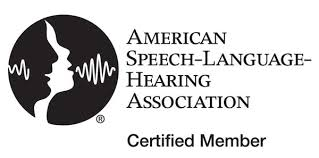Speech Therapy Activities UsingGood Night Moon
A few nights ago I was lying with my children reading them the bedtime story "Goodnight Moon" by Margaret Wise Brown. We all love this book.
It is simple and quirky and visually stimulating (and they can't stop laughing when I say "Good night nobody"!)
My wheels started spinning as I imagined the many speech and language opportunities embedded in this book.
Although it is meant for bedtime, children love any opportunity they have to do things out of order.
They will enjoy the "bedtime" theme in the middle of the day!
Many of you may already have Goodnight Moon, but if not you can get it here. I personally like the board book the best.
Explore Our Goal Achieving, Client Centered Products
Yes/No and WH Questions
- Is the room green?
- In this book, is it day time?
- Does the child whisper "hush?"
- Are there three little bears in the picture?
- Is there a horse jumping over the moon?
- Do the kittens like to play with yarn?
- Is there a telephone in the room?
- Does the quiet old lady sit on the bed?
- Is the balloon red?
- Is there a dog in the room?
- What color is the room?
- What color is the balloon?
- Who is jumping over the moon?
- How many bears are sitting on chairs?
- What is hanging on the drying rack?
- Who is laying in the bed?
- Who is sitting in the rocking chair?
- What does the quiet old lady say?
- What objects are on the table right next to the bed?
- Who is the smallest animal in the room?
Categorization
Print this list of words and cut each one out.
Use a shoe box or something square and tell the children it is the green room. (Use construction paper or a green crayon to make the walls look green if you want!)
Then have the children put the words that belong inside the room into the box, and the words that don't belong in a pile on the desk.
Synonyms/Antonyms
Using white paper, cut out 10 circles, and then cut them each in half. These will be your "moons."
Either print/glue or write the following words on each half circle.
Then let the kids match up the half moons to make them full!
Synonyms
Mittens
Kittens
Bunny
Lamp
Mush
Gloves
Baby cats
Rabbit
Light
Cornmeal
Antonyms
Light
Moon
Awake
Day
Nobody
Dark
Sun
Asleep
Night
Somebody
SEE ALSO: The Best Free App for Speech Therapy
Verbal Expression
- Using your children's expressive goals, create a picture of what THEIR bedroom looks like.
You can talk about what things they keep in their room, the colors of the walls and bedspread and curtains, furniture, toys, and even their bedtime routines.
This picture can be drawn as you talk/make sentences, or you can lay it out like a diagram with the words "My Bedroom" in the middle and various details surrounding it. - All children (or most anyways!) have an ideal bedroom. The bedroom of their dreams. Create a picture or a diagram using their imaginations of their perfect bedroom.
- Create a bedtime story together. One person starts, then the next person adds on, and so on. This can be done with two or more people.
This would be a fun activity in the therapy room, but also a great homework activity to be completed with parents at home.
Then your student can retell the bedtime story that they created with their parents during your next therapy session.
Auditory Comprehension
- Read a favorite bedtime story (or any storybook) to the children and have them retell the story or answer questions about it.
At our house we have a favorite book full of bedtime stories.
I don't necessarily recommend Goodnight Moon for auditory comprehension because there isn't much of a story to follow.
But bedtime stories are plentiful! - Print these pictures or display them on your tablet or computer.
Describe one of the pictures to the child and ask them to guess which item you are talking about.
This is a great auditory comprehension activity, but can be a verbal expression activity if you switch roles and have the child describe one picture to you.
If you print the pictures you can send this activity for homework. - Planetsforkids.org has a lot of information about the moon.
The opportunities are endless using this resource and it's great for older students working on more advanced skills.
You can read them facts and have them practice taking notes, retell information, learn new vocabulary words, sequence the stages of the moon using their own drawings, etc.
The moon is so thought provoking!
Fluency
This book would be wonderful for students working on fluency; it is a soft quiet book (with repetition) which would help to improve easy onset and slow speech.
If your children/students are working on phrases or sentences, have them read the book aloud.
Tell them to read it as though they were trying to get a baby to sleep.
Articulation
Use the carrier phrase "good night..." and add words from your child's target word list or use Word Vault to create silly sentences.
You can say "good night" to every word on that list!
Cut out words with their target sound and crumple them up a little and place them all in a bowl.
Tell the child that this is their bowl of "mush." If they "eat" (say) the whole bowl, they get a treat!
SEE ALSO: The Best Books for Speech Therapy Practice

About the Author
Lindsey is an M.S. CCC-SLP from Salt Lake City, UT. She received both her B.S. and M.S. from Utah State University. When she's not chasing her 5 crazy kids around, she enjoys creating engaging speech therapy ideas and materials. Read More
Activities and Product Discounts, Oh My!
Sign up for Terrific Therapy Emails
Your information is 100% private & never shared.




























